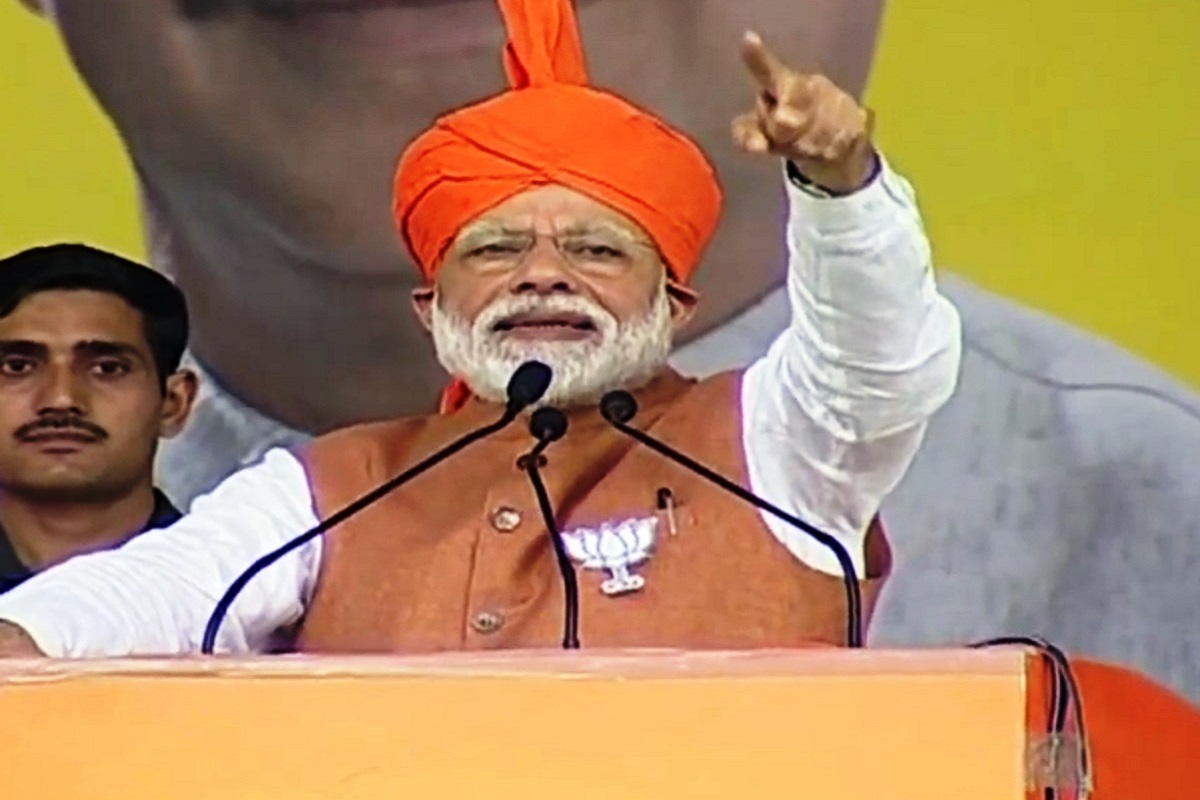Prime Minister Narendra Modi’s challenge in the ensuing elections lies in winning the perception war by persuading people to believe that he alone can safeguard the country’s interests and India to prosperity. This is not so easy as compared to 2014, when he was the challenger to the throne. Today he is the defender and has to satisfy people that he has delivered. As Modi began his poll campaign this week, the BJP believes that the Prime Minister alone can lead it to a victory once again, despite opposition claims that he is a demagogue and a “hatemonger.” Fortunately for him, there is no challenger of his stature from the opposition.
The real test before Modi is to present in 2019 a credible report card. This is easier said than done, as the report card is not as flattering as it would seem after five years. In 2014, he came with a clean slate promising big dreams like bringing “achche din” and economic prosperity. In five years, he could deliver some promises and could not deliver on some others, as it is not possible for any one to fulfill all promises. The question is how to convince the electorate that he had done his best and that he needs another five years to complete all that he had promised? This is where the problem arises as the opposition is bringing out what it calls scams during his regime like the Rafael deal etc, the ill-conceived implementation of GST and demonetisation and such other measures. Lack of jobs and rural crisis are other factors.

Fortunately for Modi, Pulwama and the retaliatory Balakot airstrikes happened just on the eve of polls. This has resulted in bringing nationalism back to the fore, and Modi has taken full advantage of it. Since then the Prime Minister has been talking about how he is the only decisive leader who can take bold decisions like going across the border and carry out airstrikes. It is clear that terror and nationalism will be the party’s main poll planks in the coming days. On the other hand, the opposition is talking about jobs, agrarian distress and other such livelihood issues.
Modi has gone back to his theme of Pakistan-bashing once again. In 2002, he came to power in Gujarat on the “Mian Musharraf” poll plank. He claimed that if he were not voted to power, Mian Musharraf would sleep well. Now he is presenting the opposition as the poster boy of Pakistan claiming that they are questioning the Indian military forces. He stresses the point that these other parties are shielding Pakistani terrorists. How far the public will buy this rhetoric is to be seen, as after all you cannot brand all others unpatriotic. That too, a party like the Congress, which fought for the freedom and whose nationalism and patriotism has not been questioned till now.
Naturally, wherever the PM goes, the seven welfare schemes launched by his government for the poor, who form a part of almost every speech made by Modi and BJP, are his strong selling points. They include Ujjwala, Ayushman Bharat, Saubhagya, Swachh Bharat, Jan Dhan, Pradhan Mantri Awas Yojana and Deen Dayal Upadhayay Gram Jyoti Yojana.The poll manifesto might bring out more welfare schemes and bring out the party’s vision for the next five years.
Modi’s challenge also lies in pacifying the farmers who are on the warpath. Almost 70 per cent of India’s population is engaged in agriculture. The farming community is in great distress due to various reasons. Farmer’s suicides are on the increase and the farming community is agitating about more facilities and loan waivers etc. His recent scheme to the farmers of putting Rs 6,000 per annum in their pockets is to woo and pacify them.
Another challenge is the first time voters who are around 130 million. In 2014, 150 million first time voters voted for him. This is the aspirational class of voters who dream of good jobs and better living conditions. Will they vote for Modi when there are not that many jobs in the market? This is another serious poser.
Though Modi has come up with some welfare initiatives for women like Triple Talaaq, Ujwala etc. it is not clear whether women as a group will support Modi this time. Women are demanding 33 per cent reservation in legislatures and Parliament and Modi government has not touched this issue. Many other parties like the BJD have provided 33 per cent reservation for women in the coming elections. Women’s safety is yet another issue.
Modi is a communicator par excellence and he has the ability to argue his case well. Therefore it is quite possible he might win the perception war. His biggest advantage is that the opposition is weak and divided. It all depends on how the opposition counters his narrative.












